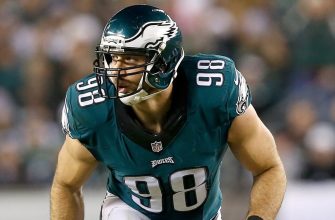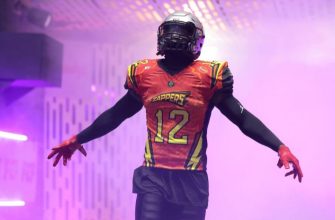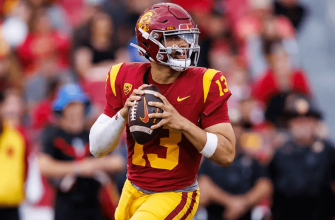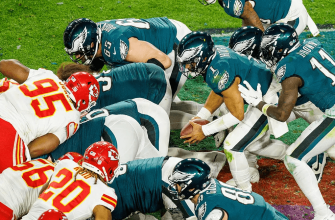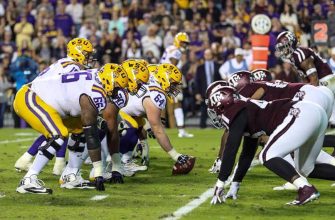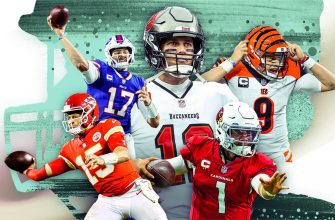Cadence in football refers to the verbal signals and sounds used by the quarterback prior to the snap to start a play. The quarterback uses cadence to communicate signals to his own team’s offense.
The main reasons quarterbacks use cadence are:
- To coordinate the timing of the snap with the rest of the offense
- To draw defensive players offsides and potentially force a penalty
- To change the play at the line of scrimmage by calling an audible
Quarterbacks will bark out code words, repetitive sounds, numbers, or other verbal cues as part of their cadence. For example, a quarterback may say “Red 80! Red 80! Hut! Hut!” prior to the center snapping the ball. The specific cadence used can vary based on the quarterback’s preferences or the team’s offensive system.
Cadence allows the quarterback to synchronize the offense right before starting a play. It ensures everyone knows when the ball is about to be snapped to avoid false start penalties. Quarterbacks can also use cadence strategically to throw off defenders and draw them across the line of scrimmage. Overall, cadence is an important fundamental tool for quarterbacks to direct the offense efficiently and gain an edge over the defense.
Origins and History
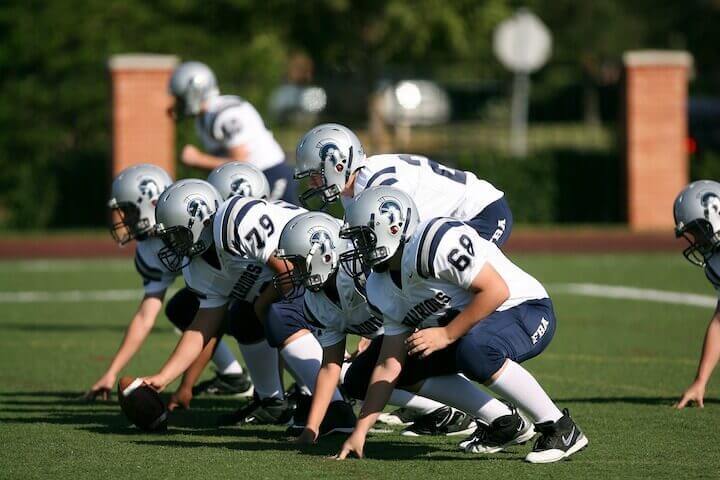
The use of cadence in American football dates back to the origins of the sport in the late 19th century. While the precise timeline is unclear, cadence became an integral part of the quarterback’s pre-snap routine by the early 20th century.
In the early days of football, plays were called by the quarterback at the line of scrimmage without a structured cadence. This gave defenses an advantage in anticipating the snap, so teams devised cadences to prevent this. One of the earliest known uses of cadence was the silent count, where the center snapped the ball without a verbal cue from the quarterback.
As the game evolved through the 1920s, quarterbacks began experimenting with vocal commands and inflections to draw defenses offsides and disguise their intentions. The rhythmic, sing-song style of cadence we know today started to take shape during this era. Cadence became more widespread and complex as a tool for deception rather than just timing the snap.
The modernization of the passing game and increased use of audibles from the 1950s onward expanded the strategic role of cadence. More advanced cadences emerged, with quarterbacks using code words and signals to communicate changes at the line. Cadence grew into an art form, with quarterbacks perfecting their vocal inflections, rhythms, and sequences to keep defenses guessing.
Today, cadence remains an indispensable element of football strategy. Quarterbacks have endless options for varying cadence and using it to control the game’s tempo. The evolution of cadence has shaped football into the complex, fast-paced game we know today.
Types of Cadences
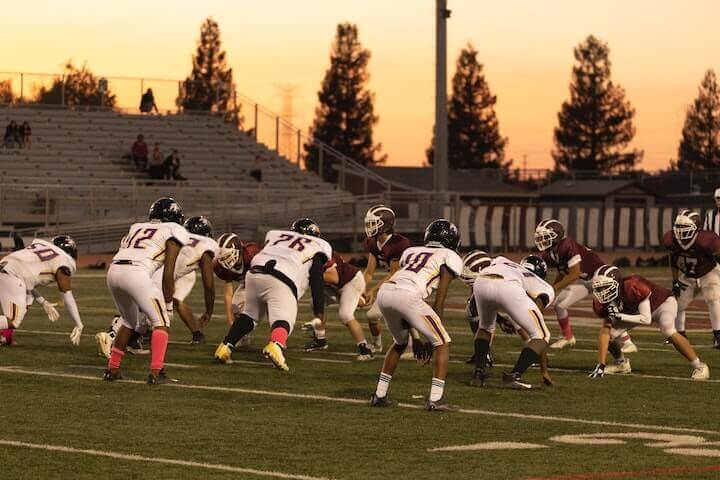
In the NFL, quarterbacks use different cadences to try to draw defensive players offsides or get the defense to show its hand.
There are several main types of cadences:
Hard Counts
A hard count involves the quarterback emphatically shouting signals at the line of scrimmage before the snap. The QB will aggressively use a verbal cadence like “Hut! Hut!” or “Set, Go!” The goal is to make defenders think the snap is imminent, causing them to jump across the line of scrimmage. This results in a 5-yard offsides penalty against the defense.
Soft Counts
A soft count is the opposite approach. The quarterback uses a more relaxed and quieter voice at the line. This tries to lull defenders to sleep and makes them less prepared for the real snap count. A soft count is meant to catch the defense off guard when the ball is actually snapped.
Silent Counts
With a silent count, the quarterback uses non-verbal signals to communicate with his offense. This is done when it’s too loud for verbal cadences to be heard, like at home games when the crowd is extremely loud. The QB will use hand signals or leg taps to indicate when the ball should be snapped without saying anything.
Dummy Counts
A dummy count refers to when the quarterback goes through his standard snap count routine, but does not actually have the center snap the ball. This is used a few times to set up the defense, before the QB does the real cadence leading to the snap.
Why Cadence is Important
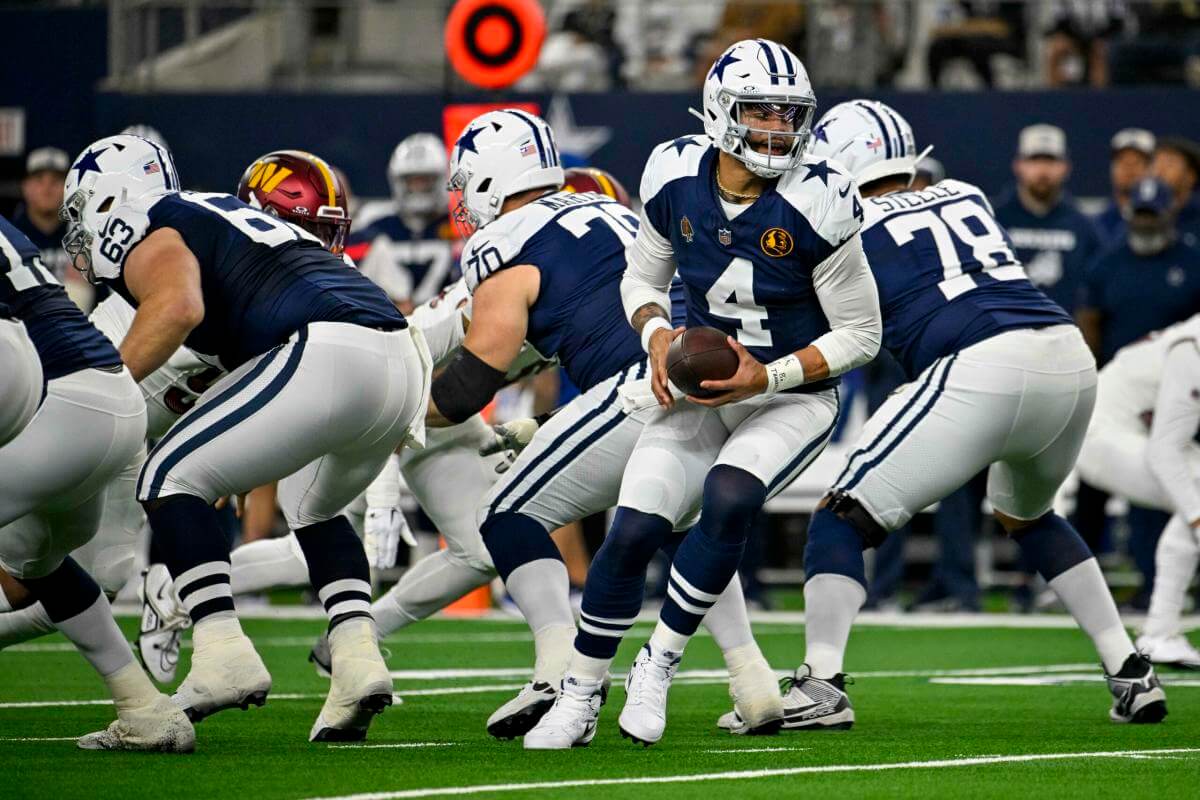
Cadence is a critical tool for quarterbacks and offenses in football.
There are two main reasons why cadence is so important:
- Allows QB to draw defense offsides: The cadence allows the quarterback to use voice inflection and hard counts to try and draw defenders on the other team offsides. If the defense jumps early, this results in a 5-yard penalty against the defense for being offsides. Savvy quarterbacks will use the cadence strategically with a hard count on key downs to try and get a free first down via a defensive penalty.
- Helps QB coordinate snap with offense: The cadence allows the quarterback to coordinate the precise snap of the ball with the rest of the offense. The quarterback uses a spoken signal to initiate the snap, ensuring everyone on offense executes their assignment exactly when the play starts. This synchronization is critical for the effectiveness of the play. A botched snap can ruin the timing of a play. The cadence allows the quarterback to coordinate with the center on when the ball will be hiked on a given play.
So in summary, cadence gives the quarterback more control and strategic options pre-snap, while also allowing him to perfectly coordinate the start of each play with the rest of the offense. This is why the cadence a quarterback uses is such a critical tool in football.
Using Cadence Strategically
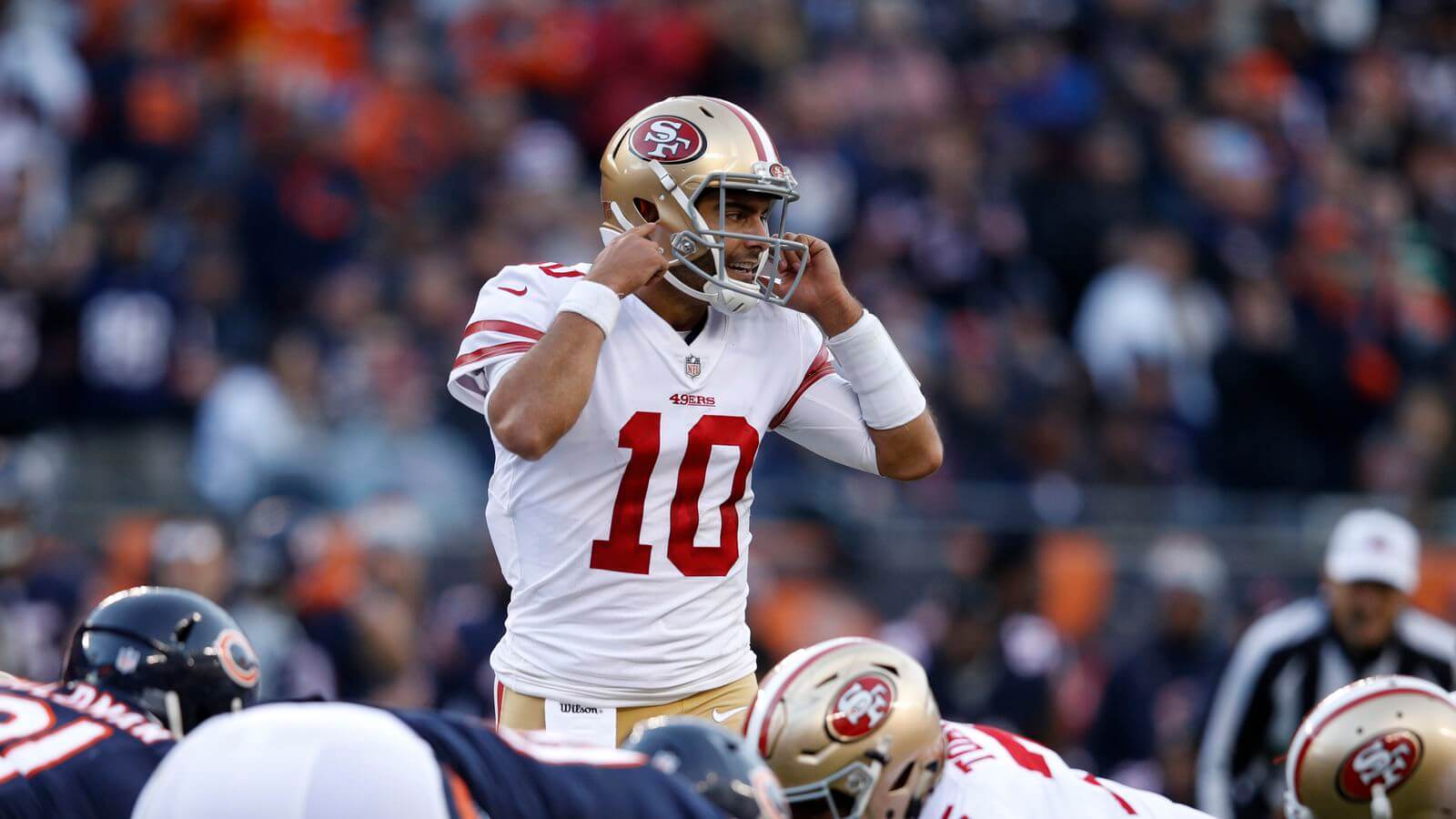
Cadence is an important tool that quarterbacks use to gain an edge over the defense. By changing up the cadence, quarterbacks can keep the defense guessing as to when the ball will be snapped. Drawing defenders offside with cadence can be a huge benefit for the offense.
Quarterbacks intentionally vary the speed and style of their cadence to catch defenders off guard. If the defense starts timing the snap count, the quarterback can use a “hard count” with an abrupt and loud cadence to try to make defenders jump early. Using a slow, drawn-out cadence can also lure anxious defenders across the line too soon.
Savvy quarterbacks will selectively use these cadence techniques in key situations. When the offense needs to get a first down or score near the goal line, a hard count becomes more likely to draw the defense offside and move the team 5 yards closer. Quarterbacks are also prone to using creative cadences on 4th down attempts to catch the defense off guard.
Drawing offside penalties not only benefits the offense with yardage, but it also frustrates the defense. Defenders can become hesitant on their pass rush if they get flagged frequently for jumping the snap count. The disruption to the defense’s timing can create opportunities for big offensive plays.
So while cadence fundamentally coordinates the start of each play, it also serves as an important tactical weapon for the quarterback. Keeping the cadence irregular and using hard counts in key situations can catch defenders off guard and produce game-changing penalties. Cadence is a key tool that all great quarterbacks utilize to strategically outwit defenses.
Notable Examples

Some of the NFL’s best quarterbacks have become masters of using cadence strategically to outwit defenses.
Here are a few famous examples:
- Peyton Manning’s “Omaha” Cadence – Manning was renowned for barking out the word “Omaha” before plays, sometimes dozens of times per game. This kept defenses guessing if “Omaha” actually meant anything or was just a decoy. Manning used it to recognize disguised defenses and adjust plays at the line.
- Tom Brady Draws Offsides Penalties – Brady often varies his cadence and voice inflection dramatically to draw defenders offside. This results in 5-yard penalties against the defense for jumping early. Brady has elicited more offsides flags than most QBs by luring anxious pass rushers to react too soon.
- Aaron Rodgers Quick Snaps – Rodgers has burned defenses several times with quick, unexpected snaps when the defense wasn’t set. By snapping the ball immediately after calling for it, he’s scored touchdowns on free play opportunities.
- Drew Brees’ “Double-Cadence” – Brees uses a deceptive technique in which he barks two hard cadence counts in a row without snapping it. This often causes defenders to tip their hands if they react prematurely on the first hard count.
- Andrew Luck’s Varied Cadences – Luck has credited Peyton Manning for teaching him the importance of diverse cadences. He uses hard counts, abrupt pauses, etc to keep opponents off-balance and induce penalties. This bayou cadence style has worked well for Luck.
These examples demonstrate how elite NFL quarterbacks leverage cadence mastery to control the game, dictate matchups, and create advantages over the defense. Their cadence expertise has directly led to big plays, long drives, penalties, and points.
Cadence and Quarterbacks
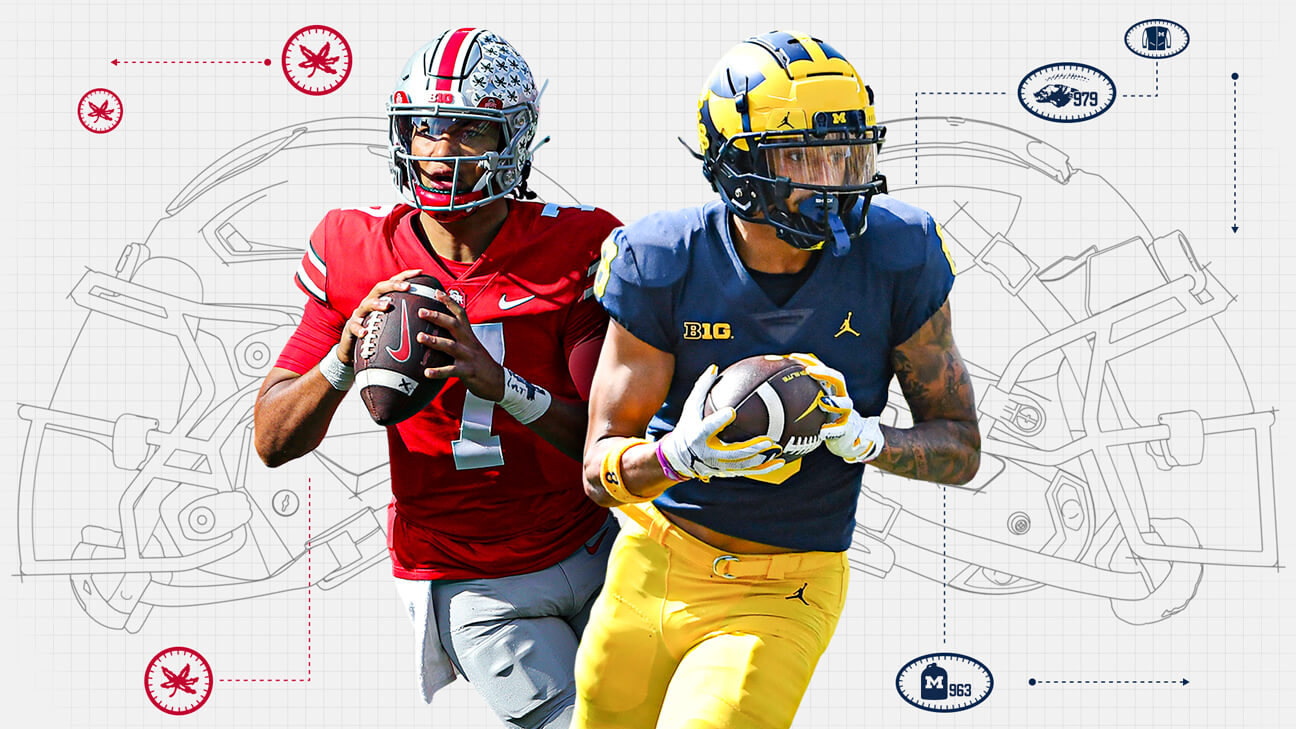
Cadence is a critical tool for NFL quarterbacks to command the offense and outwit defenses. The league’s top quarterbacks demonstrate incredible mastery of cadence to gain an edge.
Tom Brady is renowned for using hard counts and clever voice inflections to manipulate defenders and draw them offsides. His veteran experience allows him to vary snap counts and employ trilled Rs or sharp syllables to fool opponents. Brady’s cadence reflects his leadership and total command of the Patriots’ offense over two decades.
Similarly, Peyton Manning was a cadence virtuoso, mixing up inflections and rhythms at the line of scrimmage. His dramatic gestures and code words were used to convey plays and directions to teammates. Manning’s mastery of cadence formed a core component of his preparation and cerebral approach to quarterbacking.
Aaron Rodgers follows in this tradition as one of the smartest quarterbacks when using cadence. He draws defenders offside by altering his voice and snap count patterns. Rodgers’ skill reflects his overall field generalship and ability to out-think defenses. He frequently catches opponents jumping early by using hard counts and accelerating his calls at the line.
The ability to command cadence is seen as a hallmark of elite NFL quarterbacks. It demonstrates leadership, discipline, and football intelligence. The greatest quarterbacks orchestrate the symphony of the cadence to move defenders, adjust plays, and execute the offense. Cadence mastery allows quarterbacks like Brady, Manning, and Rodgers to control the game from the line of scrimmage.
Cadence and Defenses
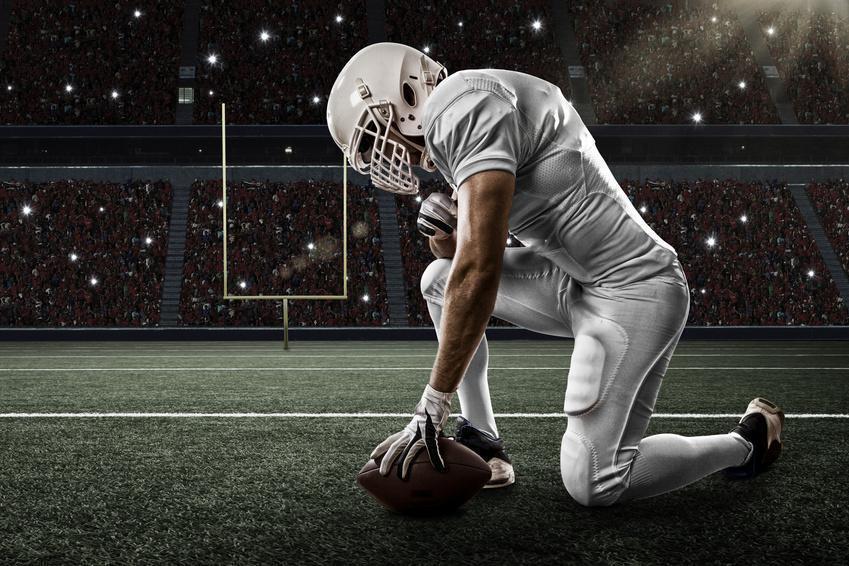
Defensive coordinators pay close attention to the cadence used by opposing offenses. They look for any tendencies or patterns that might tip them off to when the snap is coming. This allows the defense to get a jump on the play.
There are several strategies defenses employ against cadence:
- Defenders watch the quarterback’s mannerisms, stance, and rhythms trying to detect when the snap is imminent. Subtle body language can foreshadow when the play will start.
- Defenses disguise their own looks and stunts to counteract cadence advantages. By masking their intentions, it’s harder for the offense to take advantage of drawing them offside.
- Defenders are coached not to tip their hand or reveal if they’ve guessed the snap count correctly. Even if they time it right, they may pause an extra beat to avoid detection.
- Some teams use code words and signals to communicate detected cadence patterns across the defense. This synchronizes the unit and times jumps accurately.
- Aggressive defenses may ignore hard counts intended to draw them offside. By refusing to bite on the fake, they maintain their attack while trusting their reads.
- Defenses watch for substituting skill players as a potential cue preceding the snap. Savvy coordinators counter by shuffling players constantly.
Disguising coverages, masking intent, and synchronized timing are vital for defenses facing creative cadences. Keeping the offense guessing wrongfoots their schemes and helps defenses disrupt the play.
Penalty Flags and Cadence
The use of cadence by offenses and defenses can sometimes lead to controversial penalty calls in the NFL. Two of the most common are false start and offside penalties.
A false start penalty occurs when an offensive player flinches or moves forward before the snap of the ball. This is often caused by a defender disguising the cadence and tricking the offensive linemen into thinking the ball has been snapped. Even the slightest flinch by a lineman after they’ve gotten set for the play will draw a flag.
Defensive offside occurs when a defender crosses the line of scrimmage before the ball is snapped. This is usually caused by the defender mistiming their jump during the cadence and reacting too early. Even if the defender manages to get back before the ball is snapped, merely breaking the plane of the line of scrimmage is enough for a penalty.
Controversial calls sometimes occur when drawing an offense or defense offside is part of the strategy around cadence. For example, hard counts are specifically designed to try and draw defenders offside. Smart quarterbacks will often use a dramatic cadence on 4th down or other critical situations to induce an offside penalty and earn a first down. Conversely, defenses will sometimes disguise their own cadence and movement to try and draw the offense into a false start. This back and forth around cadence can lead to gamesmanship and debated calls.
One famous example came in a 2012 playoff game between the Green Bay Packers and San Francisco 49ers. The referees called a defensive offside penalty on the 49ers but then changed the ruling to a false start on Green Bay right before the snap. This nullified a Packers first down in a close game and was heavily criticized by Green Bay after the loss. The confusion came down to the cadence and which side first induced the other to jump. This showed how the strategic use of cadence on both sides can sometimes lead to controversial and game-changing penalty flags.
Cadence in High School and College

The use of cadence is an important part of football at every level, including high school and college. While the principles are similar, there are some key differences in how cadence is utilized compared to the NFL.
At lower levels, the cadence patterns tend to be simpler, with less vocal variation. Quarterbacks will typically use a “Ready, Set, Hut” or “Down, Set, Hut” cadence rather than the complex multi-word calls used in the pros. This is because high school and college players have less experience reading defenses and adjusting protections.
The snap count is also more straightforward. There is less effort to quick snap or use hard counts to draw opponents offside. Some delay in the snap is common to allow the play call to be communicated fully.
In high school, quarterbacks are often looking to the sideline for coaches to call out the play. So the cadence provides time for this, as well as allowing players to line up properly in the right formation.
At the college level, communication is handled with hand signals and sideline posters rather than radios in the helmet. But the quarterback still needs time at the line to orchestrate the play call.
Defenses will shift and adjust based on the cadence, but do not use the same complex schemes to disguise coverages and blitzes seen in pro football. There is more focus on sound fundamental execution than deception.
While sophistication increases at higher levels of college football, cadence remains focused on allowing proper coordination and setup of the play rather than a weapon of strategic manipulation. Mastering cadence fundamentals is an important step in a quarterback’s development.


